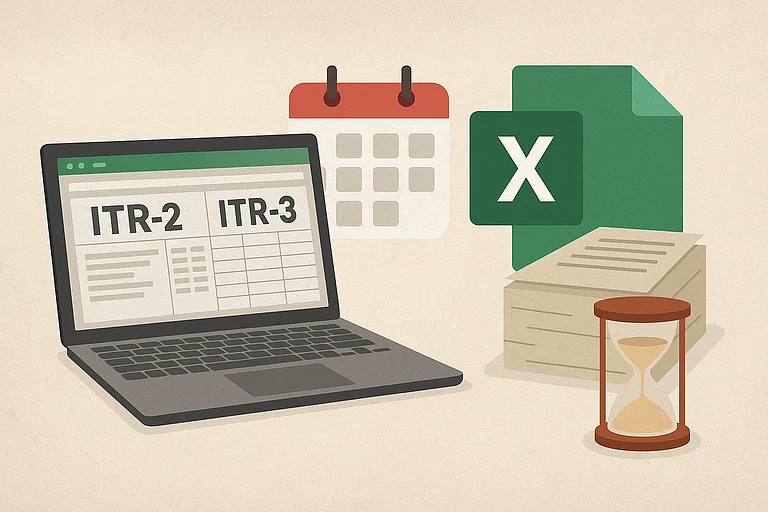What seems like a simple, harmless decision - adding your spouse or parent as a joint holder in your mutual fund investment, sometimes is not that straightforward.
Recent experiences shared by financial planners and tax professionals point to a growing problem: individuals named as joint holders in mutual fund folios are being flagged by the Income Tax Department, sometimes even receiving notices for investments they did not make, or were not even aware were being reported under their name.
What is this issue?
Often it happens, a joint account holder receives a notice from tax department asking to explain the investment money even though they had no hand in it.
One such case was highlighted by Abhishek Kumar, a Sebi-registered investment advisor, who shared how a client's wife, listed as a joint holder in her husband's mutual fund investments, received an email from the tax department. The investment was entirely funded by her husband. The money came from his bank account. Yet her name on the folio, and more importantly, her PAN, was enough to prompt scrutiny.
Why? Because in the eyes of the tax system, joint holders are assumed to be joint owners.
If the transaction value crosses Rs 10 lakh, it gets reported under Specified Financial Transactions (SFT). When this happens, everyone listed, irrespective of who funded it, may be asked to explain the source of funds.
The Tax Department Doesn't Go by Intent
Traditionally, tax rules recognised the first holder as the legal owner for income tax purposes, unless the second or third holder contributed to the investment. That meant if your spouse added your name only for convenience or smoother transfer on death, you wouldn't have faced any tax implications.
But now, automated systems flag PANs linked to high-value investments. And mutual fund houses are required to report all names and PANs listed on a folio, not just the primary holder. That information gets matched against ITRs. And if something does not add up, say the joint holder has not filed returns or declared those investments, an email or notice may follow.
Such mismatches have become a new pain point for the taxpayers.
What the Notices Say, And What They Don't
Often, these emails or alerts do not offer much clarity. As Kumar pointed out in a LinkedIn post, the I-T portal offers ambiguous response options like "Information is not fully correct" or "Other PAN," leaving people confused about what to click.
Worse, for joint holders who are elderly, non-resident Indians, or homemakers with little taxable income, this scrutiny can be especially jarring. Many may not even have their contact details updated with the I-T department and may miss the initial notice entirely.
And by the time the tax authority follows up, it may already be a reassessment proceeding. That adds cost, stress, and the need to engage professionals to respond, even when the investment is not done directly by you.
In many such cases, after weeks of effort and paperwork, the conclusion is what the investor knew from the start: no tax is payable by the joint holder. But by then, the damage in terms of time and money is done.
Convenience Can Be Costly
Joint holding is a common feature in Indian families, used not just for operational ease but also as a succession tool. But financial planners are now urging caution.
If you are holding mutual funds jointly, it is worth addressing the following question from the start:
Who funded the investment?
Are the transactions clearly documented?
Does the joint holder file tax returns?
Can they respond to I-T department queries, if needed?
If the joint holder is only added for convenience or as a future nominee, consider whether you actually need to name them at all. In many cases, adding a nominee (rather than a joint holder) may serve the same purpose without triggering tax reporting complications.
Who is a nominee? A nominee is not a legal heir or co-owner; rather, they are simply the person who receives the investment in the event of your death. And since their PAN doesn't appear on the folio during your lifetime, there is no SFT link to worry about.
When Single Holding May Be Safer
A single holding structure keeps things simpler during your lifetime by giving you full control, minimal confusion during tax filings, and no coordination required for transactions. You can still plan for succession by adding a nominee and ensuring your will or legal arrangements reflect your intent.
Joint holding may make sense for shared financial goals, but only when both parties are active participants in the investment, funding it, managing it, and being ready to respond to any compliance queries.
The Bottom Line
The tax department's technology backbone is catching up with financial complexity, with PAN-wise monitoring, SFT filings, and automatic triggers. This could mean that even minor misalignment can attract unwanted attention.
If your idea of family support involves naming your spouse or parent as a joint holder, think it through. In the eyes of the law, names on a folio mean something and are considered no longer just a formality but a declaration of ownership. Before adding someone as a joint holder, make sure you have thought through the tax consequences and have kept the paperwork ready.















